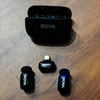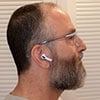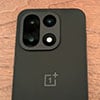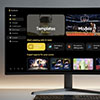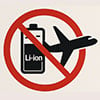
I was feeling proud at 4:07 AM on June 26, 2025 – showing up two hours before my painfully early flight from New York’s Laguardia Airport to Boston Logan. I’d left myself plenty of time in case something went wrong – which it did. I hadn’t gotten my state Real ID, which was newly required to board flights, and I’d left my passport at home. I had just enough time to dash home, grab my passport, go back to the airport, and check in for my flight – spending about $50 on extra Uber rides.
I could have skipped that trip if I’d had an Android phone. Last year, Google added the ability to scan a U.S. passport and produce a TSA-approved digital ID for domestic flights. This week,Apple Wallet gained the same capability – allowing you to present its Digital ID on either an iPhone or Apple Watch – at least at some checkpoints and some airports.
We may be moving to a world of fully digital IDs, but we’re not there yet. Apple’s announcement of Digital ID this week says that it will “roll out first in beta at TSA checkpoints at more than 250 airports.” Apple doesn’t provide a list of which airports are included.
The TSA doesn’t furnish such a roster, either.It does list the 15 states that support creating digital versions of their Real ID cards using their own state apps or scans of the state cards using the Apple, Google, or Samsung wallet apps. With digital IDs from these states or Puerto Rico, or passport scans from residents of any states using Google and now Apple Wallet, flyers can “breeze through more than 250 TSA checkpoints,” says the agency’s page, without naming them.
Read more:Skip the Wallet – TSA Now Accepts Digital IDs on Your Phone
Supporting digital ID is not just a policy decision; hardware is required. Checkpoints need to be equipped with CAT-2 (Credential Authentication Technology) readers, which are not available at all airports or all checkpoints. For instance, it's offered at only the Terminal 1 Makai Checkpoint of Inouye International Airport in Honolulu.
A quick search of official announcements and other reporting turned up 36 airports in the U.S. that accept digital IDs, including LaGuardia. So I could have gotten on that flight to Boston in June without a Real ID card, but not onto the return flight from Boston. Logan Airport doesn’t seem to support the technology yet.
In lieu of a TSA database, it’s best to check information for the individual airports you are flying through or the governments of the states they are located in (as I just did for Laguardia). The State of California lists 16 airports on its website (including Los Angeles, Oakland, San Diego, and San Francisco); Puerto Rico lists three; and Louisiana names Louis Armstrong New Orleans International Airport. But most states don't seem to say anything, so you may not find a definitive answer for a particular airport online.
Read more:Google Maps Gets Chatty with Gemini AI Integration
The introduction of digital check-in is an in-progress patchwork. The process is gaining momentum, but don’t ditch your Real ID card or passport yet – a warning that Apple, Google, the TSA, and others involved in this process echo.
How to Set Up a Digital ID on iPhone
Apple's new passport capability builds on its support for adding state Real IDs from individual states. It's just rolling out, and you will have to upgrade your iPhone to iOS 26.1 for the passport option to appear.
Read more: How to Update an Old iPhone
Once you do, tap the Add (+) button at the top right of the Wallet app screen, then select Driver’s License or ID Cards. In the past, this has featured a listing of U.S. states. It should now have a new button labeled "Digital ID."
Tap that to start the process. You'll then use the iPhone to scan the photo page of your passport and tap it to the back of the passport to read the embedded security chip. You'll confirm your identity first by taking a selfie for verification. Then you'll use the phone to record a series of facial and head movements. You’ll receive an alert when the verification process has completed.
[Image credit: screenshot via Sean Captain/Techlicious, phone mockup via Canva]

